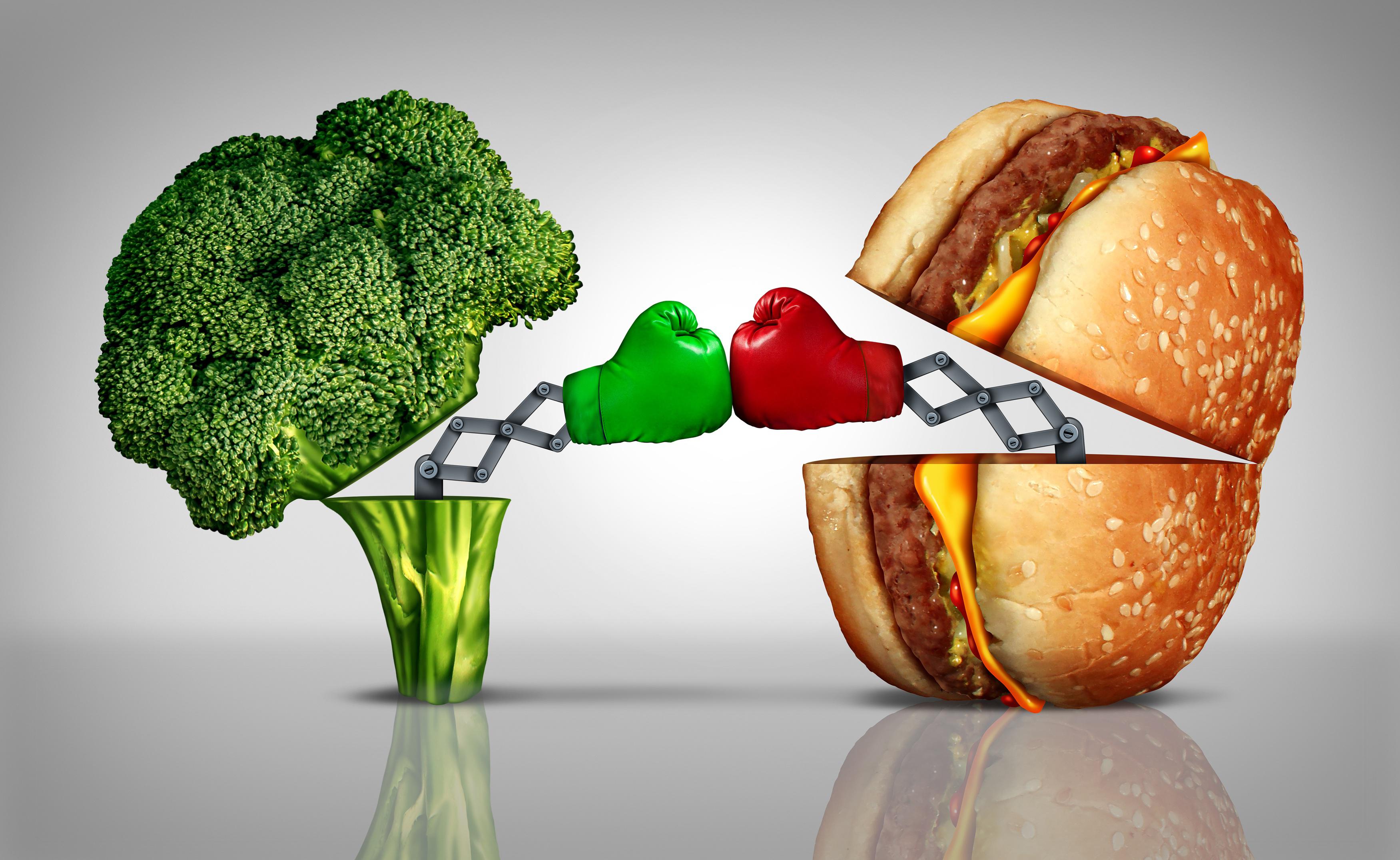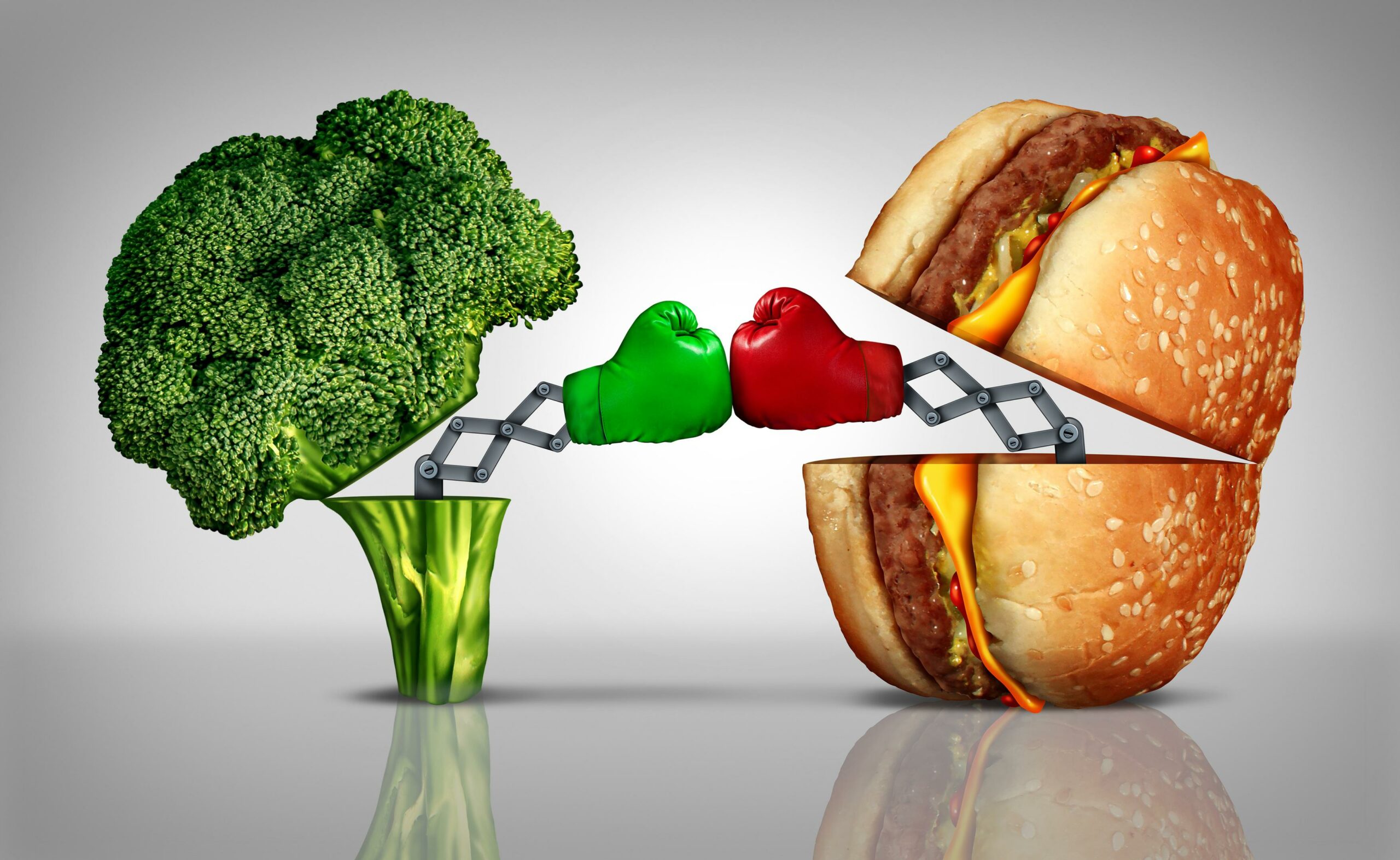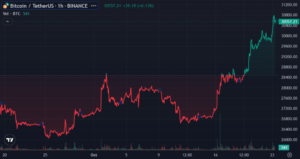
Why food policies must stop looking like “woke nutrition” to food traditionalists
When broccoli tastes like a cheeseburger the food fight will be over.
gettyWhen we talk about the country’s “culture wars,” we usually assume it’s about politics. But Americans disagree about more than that. They defend to the death what they eat, and their right to eat what they want. That’s why attempts to change America’s eating habits to healthier foods keep hitting stubborn roadblocks.
Like the political rifts that were exacerbated during the Covid pandemic – vaccines; masks; school policies – America’s obesity pandemic has served as an accelerant to those in government and public health who attempt to strong-arm the food industry into making their products healthier, or frighten consumers away from familiar comfort foods.
In a recent move, the FDA is pushing to tighten the definition of “healthy,” making it more difficult for food companies to meet that criteria (ConAgra, the maker of Healthy Choice, has stated that it may throw in the towel on its eponymous healthy brand). Public health advocates are promoting warning labels to go on the front of packages to alert consumers to high levels of calories, added sugars, sodium and saturated fats. And the White House Conference on Hunger, Nutrition and Health has signaled that it will facilitate lowering the sodium and added sugar content of foods.
But Americans are not buying this. Their eating behaviors are not on the same wavelength as those who wish to help. While half of Americans claim to eat healthy, the CDC cites that more than 36% are consuming fast food regularly. And research from Northeastern University’s Network Science Institute indicates that 73 percent of the United States food supply is ultra-processed.
Also consider the way people eat to celebrate good times: The top 10 foods consumed during Super Bowl Sunday consist of chips and dip, chicken wings, pizza, nachos, cheese and crackers, cookies, burgers and sliders, meatballs, tacos and ice cream. From winter holidays to summer barbecues and fall Oktoberfests, indulgent food and drinks are essential ingredients of beloved cultural rituals. And in a post-pandemic world emerging from almost three years of isolation and loneliness, people are hungrier than ever for these customs and the foods that are part of the experience. According to a Georgetown study reported in Forbes, “permissible indulgence” is now “in.”
Food traditionalists live for their sweet and savory indulgences. They dismiss prods from perceived “woke” nutritionists telling them what they should eat or drink, or threatening to ban or tax their favorite foods. This discord eerily parallels the way our politics are now playing out. All 19 states with obesity rates of 35% or more are in more traditional Southern, Midwestern and Appalachian states. This dovetails with the top 10 states that have the highest per capita consumption of fast foods. Conversely, efforts to tax sodas, for instance, have been driven by progressive-leaning states.
Given the political divisiveness now, no wonder we have a stalemate on healthy foods. Part of the problem may be that health advocates – justifiably alarmed by the growing obesity rates and what it’s costing society in lost lives and lost productivity – have become zealous perfectionists, trying to do too much at once. Their focus is on stamping out the problem entirely, through bans, taxes and ominous labeling. In this zeal to stamp out all “bad” foods, the perfect has become the enemy of the good – not only boxing in food companies but cuffing the consumer and enraging people who want freedom to eat whatever they want. The leap is too large.
Tying the hands of food companies to make and market healthier foods ignores an important reality: food marketers are slaves to their consumers’ desires. If consumers clamored for broccoli, we would find such cruciferous delights in every meal, snack and beverage. While public health and government officials long for a complete shift to “healthy,” food companies wrestle with how to satisfy the demands of their “base.”
Now I’m not letting the food and restaurant industries off the hook entirely. They would be remiss to ignore the growing number of consumers who want healthier foods and beverages. Packaged foods companies have been more aggressive in capitalizing on this trend but restaurants need to step up, particularly on reducing the size of their portions.
This yawning gap between what Americans eat and the proposed policies to help them sustain (or regain) their health demands a re-think as to how we go about trying to tackle the challenges of obesity, diabetes and other diet-related diseases. Instead of pushing hard for draconian change to get Americans to eat healthier, it will be more effective to take “bite size” steps so that people can start dislodging from poor eating habits rather than automatically resisting any proposed changes.
Here are some things that industry and public health advocates can do to bring about more progress:
- Stop insisting that foods be “perfect.” If all processed foods and “offender” ingredients are vilified and attacked, the consumer won’t get on board. We need to adopt a more pragmatic approach and engineer a “transition” to healthier foods. For example, a wonderfully tasty Italian entree is made of fried artichokes. Currently, food activists would scoff at this dish because it’s fried. Yet, it surely would be preferred over refined carbohydrates. To me it represents a step in the right direction: a gateway to the pleasures of vegetables for people who haven’t eaten them much; and something you can proudly add to a party menu.
- The food industry needs real innovation. Marketers are addicted to line extensions. But cucumber soda is not an innovation and the industry needs to move on from this archaic model. With little exception, food companies spend a paltry 1-2% of sales on R&D. They are putting their heads in the sand by not doubling or tripling that amount so that they can reap the rewards of pulling in consumers with healthier fare that actually tastes good. If companies like Nestle and Hershey can introduce products like Outshine Smoothie Cubes and Reese’s Plant Based Peanut Butter Cups, respectively, we know companies can innovate. It just needs to become a top priority.
- Learn from other transitioning industries. As the energy sector moves more into renewable sources, the investment community is adopting a “barbell” strategy balancing dirty and clean energy. The reasons are similar to the healthy food transition: until there is an adequate and affordable supply of renewable sources of energy, progress will languish. The same holds for food: consumers will come when healthier fare tastes as good as the comfort food they’ve known and loved, is just as convenient and is reasonably priced. These criteria have not been met yet.
The food culture wars are real and have created an effect mirroring Newton’s third law of physics: for every action there is an equal and opposite reaction. Demanding swift and draconian change to force American consumers to abandon unhealthy food en masse will fail to reverse America’s dietary malaise. Conversely, food companies – whose base consumer suffers from higher rates of obesity and diabetes – must (finally!) innovate and deliver tasty, healthier products that will appeal to that base. Absent those changes, we’re in for an even longer haul to reverse America’s obesity crisis.
Source: https://www.forbes.com/sites/hankcardello/2023/03/21/the-real-culture-wars-are-over-food/
- SEO Powered Content & PR Distribution. Get Amplified Today.
- Platoblockchain. Web3 Metaverse Intelligence. Knowledge Amplified. Access Here.
- Source: https://bitcoinethereumnews.com/economy/the-real-culture-wars-are-over-food/?utm_source=rss&utm_medium=rss&utm_campaign=the-real-culture-wars-are-over-food
- :is
- $UP
- 10
- 35%
- a
- About
- absent
- According
- Action
- activists
- actually
- added
- adopt
- Adopting
- advocates
- affordable
- aggressive
- alarmed
- Alert
- All
- American
- Americans
- amount
- and
- Appalachian
- appeal
- approach
- archaic
- ARE
- AS
- At
- Attempts
- auto
- automatically
- Ban
- Bans
- base
- based
- BE
- because
- become
- beloved
- between
- BEVERAGE
- Beverages
- blockchain
- board
- Boxing
- brand
- bring
- Buying
- by
- CAN
- Capita
- capitalizing
- CDC
- celebrate
- challenges
- change
- Changes
- Chips
- choice
- claim
- clean energy
- come
- comfort
- community
- Companies
- complete
- Conference
- Consider
- consumed
- consumer
- Consumers
- consumption
- content
- Convenient
- cookies
- country’s
- Covid
- Cream
- created
- crisis
- criteria
- cultural
- Culture
- Currently
- customs
- Death
- deliver
- demanding
- demands
- Diabetes
- difficult
- Dip
- direction
- discord
- diseases
- Dismiss
- doubling
- Drink
- drinks
- driven
- during
- eat
- effect
- Effective
- efforts
- emerging
- energy
- engineer
- entirely
- essential
- Even
- EVER
- Every
- example
- exception
- experience
- extensions
- facilitate
- FAIL
- Fall
- familiar
- FAST
- Favorite
- fda
- fight
- Find
- fluid
- Focus
- food
- food supply
- foods
- For
- Forbes
- Force
- Freedom
- from
- front
- gap
- gateway
- get
- Go
- good
- Government
- Government Officials
- Growing
- Half
- Hands
- Hard
- Have
- heads
- Health
- healthier
- healthy
- help
- High
- higher
- highest
- hitting
- holds
- holidays
- House
- How
- How To
- HTTPS
- hunger
- ICE
- ice cream
- important
- in
- indicates
- industries
- industry
- innovate
- Innovation
- instance
- instead
- Institute
- introduce
- investment
- isolation
- IT
- Italian
- ITS
- jpg
- Keep
- Know
- known
- labeling
- Labels
- large
- Law
- Leap
- letting
- levels
- like
- Line
- little
- live
- Lives
- Loneliness
- Long
- longer
- looking
- loved
- lowering
- made
- make
- maker
- Making
- Market
- marketers
- Masks
- Meet
- Menu
- mirroring
- model
- more
- move
- moves
- Need
- needs
- network
- number
- nutrition
- Obesity
- of
- on
- opposite
- Other
- packages
- pandemic
- Parallels
- part
- particularly
- party
- People
- perceived
- percent
- perfect
- Physics
- Pizza
- plato
- Plato Data Intelligence
- PlatoData
- playing
- policies
- political
- politics
- poor
- post-pandemic
- pragmatic
- preferred
- presentation
- priority
- Problem
- productivity
- Products
- Progress
- promoting
- proposed
- proudly
- public
- public health
- pulling
- Pushing
- Putting
- R&D
- Rates
- rather
- reaction
- real
- Reality
- reasons
- recent
- reducing
- refined
- regularly
- Renewable
- Reported
- represents
- research
- respectively
- restaurant
- Restaurants
- reverse
- Rewards
- roadblocks
- sales
- same
- SAND
- School
- Science
- sector
- shift
- should
- similar
- Size
- So
- Society
- some
- something
- Sources
- Southern
- spend
- start
- stated
- States
- Step
- Steps
- Stop
- Strategy
- Study
- such
- Suffers
- summer
- Super
- Super Bowl
- supply
- surely
- sweet
- SWIFT
- Take
- Talk
- tax
- Taxes
- that
- The
- their
- Them
- These
- things
- Third
- three
- Through
- times
- to
- too
- top
- Top 10
- traditional
- transition
- transitioning
- Trend
- tripling
- true
- United
- United States
- usually
- vaccines
- Vegetables
- warning
- Way..
- What
- while
- white
- White House
- WHO
- will
- Winter
- with
- world
- would
- years
- zephyrnet













